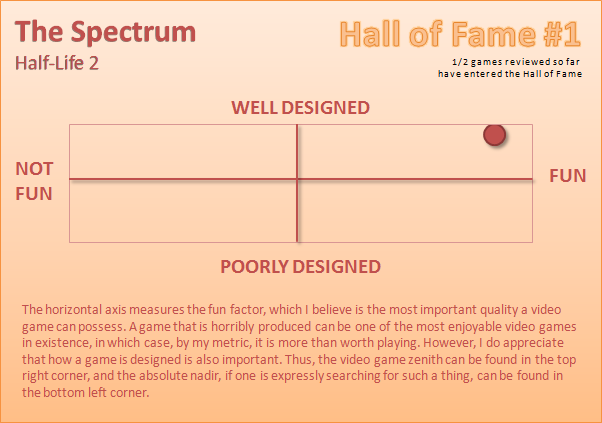In case you didn't know, Half-Life 2 is still pretty good
By zanzibarbreeze 35 Comments
I am not the first to perceive a major risk in revisiting beloved old video games. Like many other media, like films and books, video games are subject to the attrition caused by the temporal forces of our world. Time goes on; consumers evolve as do tastes and theories of design. Upon release media remains static, a snapshot of time, a snapshot of that era’s design philosophy. There is always the concern, then, that a game that was outstanding on day one is going to be mediocre a mere two years later and positively terrible five or ten years later.
Such was the only fear I harbored during the load sequence of Half-Life 2 -- that the Half-Life 2 I played a mere year back might have suffered in that twelve month window of time. Because twelve months ago Half-Life 2 was still amazing, but in that twelve month break some excellent games have been released, and in that twelve month break design philosophy has evolved, maybe not tremendously from when I last played the game, but enough -- enough to serve as a detriment.
Half-Life 2 was outstanding upon its release in 2004. Half-Life 2 is still outstanding in 2010.
It’s easy to ask how, and it’s easy to ask why, and those are easy questions to answer, and concurrently they’re not easy questions to answer. What I know is that I had an amazing experience clearing this classic game once more, and while I can’t promise to answer those questions in the following, I will try my best. What follows is my experience with the game on yet another twist of the valve.
N.B. I feel like I shouldn’t have to say this, but it seems there’s always an inherent danger on the internet when people disagree with you: this is all my opinion, and it may not necessarily reflect yours, and it is not my goal to force my opinion onto you for I am not a Half-Life 2 proselytizer. Please also note that I do not mark spoilers in this guide, but the only substantive spoilers are in the ‘Story’ section. My arbitrary statute of limitations -- let’s say two years for each game in the Half-Life franchise, because they’re so popular -- has long since passed for Half-Life 2.
Three brief notes
A note on this text
The text is broken down into four main sections: design, graphics and animation, gameplay, and story. I’ve then gone on to include three sections at the end. One covers a series of linear observations that I jotted down while playing the game, observations that didn’t seem to fit in the four main limbs of the text. I’ve dedicated the second minor section to addressing, discussing, and evaluating some of the criticisms of Half-Life 2 that I’ve come across, and the third minor section to the idea of the journey in video games.A note on the PlayStation 3
I have no doubt that this will amaze some, but I have cleared Half-Life 2 either four or five times, and each of those playthroughs was on the PlayStation 3. I don’t play computer games and I have never played Half-Life 2 on the PC. Two criticisms could be leveled here: firstly, Half-Life 2 was designed to be played on a personal computer. It was not designed for consoles. Interestingly, some parts of the game work better on consoles but there are clearly some of the game’s traits that are less well represented on consoles. Primarily, aiming with joysticks is plainly not as precise as aiming with a mouse. But there are other things which work in the consoles’ favor: take, for instance, the fact that platforming is reportedly less painful and much easier on consoles.Secondly, much has been made of the fact that the PlayStation 3, though still the complete Half-Life 2 experience, bears the worst version of Half-Life 2. Perhaps this is in fact the case, but I personally find no real fault with this particular edition. Attribute this to the fact that I have played no other version; ultimately, though, I’ve experienced none of the major problems that critics have cited. Loading, for instance, is not as distressing as others would have you believe. Neither did I experience any frame-rate issues whatsoever in this particular instance of playing the game. In comparison with the majority of other PlayStation 3 games, Half-Life 2 plays proficiently and without tumult. Make of these points what you will, but I note that with those who try to claim that the PlayStation 3 version of this game is somehow unplayable or offensive, if there are such people, are incorrect. (As a matter of interest, the only installation required took one minute before The Orange Box menu loaded.)
A note on my playthrough
Finally, here is an approximate list of how I played through the game this time around. I kept personal notes in order to determine my playtime, and progression through the game and the like.• Play 1: 7-30-2010, 21:30 > 23:00, Chapter 1 to Chapter 4.
• Play 2: 7-31-2010, 21:30 > 23:30, Chapter 4 to Chapter 6.
• Play 3: 8-1-2010, 21:15 > 22:45, Chapter 7 to Chapter 8.
• Play 4: 8-2-2010, 22:00 > 23:30, Chapter 8 to Chapter 9.
• Play 5: 8-3-2010, 21:00 > 21:40, Chapter 9 to Chapter 10.
• Play 6: 8-4-2010, 22:40 > 23:40, Chapter 10 to Chapter 11.
• Play 7: 8-5-2010, 14:30 > 16:30, Chapter 11 to Chapter 13.
• Play 8: 8-5-2010, 22:00 > 22:45, Chapter 13 to Chapter 14.
My total playtime was approximately 655 minutes, or close to eleven hours.
Design
The slow introduction of puzzle theory is superbly executed
One of the things that Valve has long been good at implementing in their video games is teaching the player how to deal with obstacles in the environment, whether it is the slow progression and introduction of enemies, or steel vents, or the fact that some doors cannot be opened. In this case what is so impressive is the way Half-Life 2 slowly trains the player to deal with puzzles. It begins with simple theory: because the handling of physics in this game is accurate, you can use objects in the world to manipulate environmental issues. Cinder blocks will weigh down a seesaw. Buoyant barrels will prop up objects in the water. Throughout the game, the simple beginnings of puzzles in the early stages are built upon to make things more complex and more interesting and more entertaining by the end of the game. And here’s the most amazing thing: I don’t find the puzzles boring. Even after five playthroughs, even though I can complete each puzzle (or know how to complete each puzzle) without too much din, I still enjoy them. I can easily place my finger on the reason why: the puzzles in Half-Life 2 make sense. Literally, they’re not nonsensical; they don’t involve rotating symbols on statues so they all fit a predetermined order as in Uncharted 2 and they don’t involve rotating and slotting differently cut blocks of stone into a wall as in God of War II (I’ll spare the Resident Evil and Silent Hill series the humiliation and won’t mention any of their vacuous and completely irrational and absurd “puzzles” -- as 1UP.com’s Scott Sharkey once pointed out, it must be hell to work at Umbrella: you’d have to collect five different keycards from around the complex just to use the bathroom). Those puzzles don’t make sense, and they don’t have anything to do with anything. As a contrast, the various obstacles in Half-Life 2 have a basis in reality and that’s what makes them so more compelling.
Learn from the non-player characters
Similarly to learning over time, early in the game there are certain segments where players have the chance to observe NPCs dealing with enemies. The implication is that the player is meant to observe and learn from those who know better. It’s simple. It’s not done in a cutscene. You can pay attention or you can blitz on and ignore. It’s just easy, caring design that really shines through.The scripting and set-pieces are impressive
Still impressive: scripting and set-pieces. One of my running arguments about Half-Life 2 is that it’s the subtle things about the game which really make it special, and the subtle scripting here is very well done. It can be as large or expansive as a big wave of Combine forces, or it can be something a little off-beat like Civil Defense cops dropping explosive barrels down into an area you’re in, or it can be the slightly more extravagant and interesting scripting like Combine forces abseiling down from ledges on nylon ropes. It all increases the tempo and adds to that frantic feel of the gunplay in the game, and modestly put, it’s engrossing.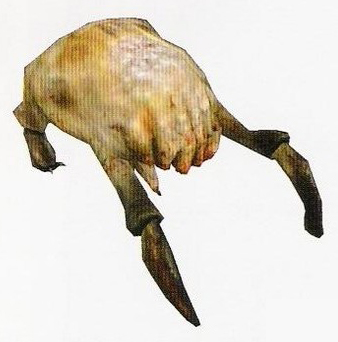
Headcrabs
The fact that headcrabs are scary and are a fierce force to be reckoned with is a testament to their excellent, profound, and poignant design, and I don’t use these words lightly. Headcrabs are largely recognized as one of the main icons of the Half-Life franchise, and yet they are essentially the weakest enemies in the game, they don’t do much, they don’t pose much of a threat, but as players we regard them as tremendous figures and we build them up as such. In part it has to do with the sound design (particularly in the case of the poisonous black headcrabs). To be sure, the creatures are fast, but with a crowbar or a shotgun they cause little pain. I find the headcrabs both disturbing and distressing, more so when I find myself low on health. A fan of headcrabs? I think not.Astonishingly good sound design
There’s nothing quite like Valve’s sound design. Sound acts as an auger for what’s coming up. Everything has its own sound: the chopper, the dropships, manhacks, zombies, headcrabs, the “maracas of death” headcrab (as coined in Rebel FM’s Game Club), the Pulse rifle, grenades, the gravity gun, doors opening, footsteps, Combine communications, electricity, striders -- all this, including but not limited to. The reason why it works so well is because each sound is distinct. You know exactly what something is as soon as you hear it. The other day while looking for a cab I heard a shrill electrical whining in the distance. It was coming from a construction site a block away but as soon as the sound reached my ears I thought: manhacks. The sound was almost identical. And I subsequently thought, ‘This can’t be good, because I’m now integrating video game things into reality’. It’s the first time it’s ever happened to me.Falling
Hand-in-hand with the sound design is the game’s approach to falling. For much of the game great care is taken in establishing the fact that players should be very wary of falling, even from small heights. Don’t fall at all, but if you have to fall, players are told, fall on a crate or something similar. Disincentives obviously include health loss, but the sound design enters the fray: the brutal sounds of bones snapping, and groaning, and my favorite of all, the female HEV suit voice-over warning: “minor fracture detected”, “major fracture detected”. Then, quite enigmatically, the game presents the player with several giant pitfalls that you have to survive without any soft ground to fall on, and without any guarantee that you’ll make it. Ostensibly the most notable section is in the mines after Ravenholm, particularly that one shaft before the large cave that serves host for some twenty or thirty headcrabs. It’s an interesting dichotomy: ‘Never fall because it’s bad for you, but actually we’re going to make you fall and see how you enjoy and deal with the consequences.’Getting lost
Here’s another dichotomy, but less of an exaggerated one: Half-Life 2, from beginning to end, is fully linear (though not detrimentally so), but sometimes you can get lost. And I’m not quite sure how this happens, but some people have suggested it’s just a negative artifact of the design process. Take, for instance, the sequence in Ravenholm directly after the introduction of Father Grigori. There is one door that you have to head through to proceed. Strangely enough, its texture is the same as the doors in the area that cannot be opened, so it’s liable to being passed over. A second example, at least for me, would be the infuriating crusher sequence later in the game in City 17, where a crusher bears down on the player and the escape path happens to be above the player rather than on level. It wouldn’t have been such a problem if the path had been clearly indicated, but ultimately that’s what the puzzle is all about. Again, however, it’s strange to see such a linear game that’s so efficient at herding the player through levels get bogged down by bizarre choices in some areas.Great music
Kelly Bailey’s music is often subtle in Half-Life 2, for it is very ambient, but its presence is much appreciated. It’s a nice addition to the play in general. In the dark areas there will be moodier pieces, and then in the action sequences there’ll be the large, loud, electronic music.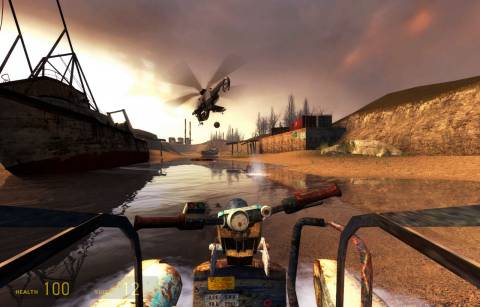
Lengthy single-player experience
I cover this extensively towards the end of the text, but I am a fan of the lengthy journey that is Half-Life 2. On average it’s a twelve hour game, and that’s for people who have played through the game before. It can last some sixteen hours for first-time players, which is extraordinary for a first-person shooter in an era where single player campaigns last little more than six hours. Thus, Half-Life 2 paints those games in a bad light. Half-Life 2 does not have more fat than muscle. It’s accurate for me to say that I enjoy most all of the game, and there are no parts I would redact. I’m sure that others have different opinions. Maybe some would cut the Sandtraps section of the game, for instance. From my perspective I don’t feel the same. I would change nothing.Quick saving
Quick saving on the PlayStation 3 is simple: hold down the START button for a few seconds. I can’t speak to whether there’s a similarly effortless way of quick saving on the XBOX 360 version of the game. As I understand it is apparently a feature that Electronic Arts integrated into The Orange Box. Why doesn’t every first-person shooter include such a method of saving, let alone every game made?Graphics and Animation
The graphics are still acceptable
Half-Life 2 has undoubtedly begun to show its age, but the game does look fine. Perhaps its sustainability has more to do with the aesthetic of the game than the fidelity of the textures. For a game that was released in 2004 (and that as I understand was updated for the console versions of The Orange Box in 2007) Half-Life 2 is holding up well. Again, I would certainly be taken by surprise if Half-Life 2 were to win contemporary awards for graphical prowess, but at the same time neither is its look offensive.The facial animation is brilliant
If the textures are starting to show their age, the facial animation is still ahead of its time compared to 99% of all other video games. The live, in-engine animation is astonishingly good. You can ascertain the mood of a character just by looking at them. Cut the speech and script out of the game and by all accounts you would still understand much of what’s going just by looking at the faces thanks to the caliber of animation.
Characters pivot while walking
There are some instances where the illusion of the game is broken. One way in which this can happen, one of these strange breaks from “reality”, is when characters addressing the player are programmed to walk and talk and face the player, all simultaneously. This means that if you’re walking behind the character they’ll turn around and walk blindly backward along the invisible breadcrumb path set by the developers. Venture before them and they’ll turn back around. You can travel back and forth and see them pivot. It’s flattering -- because they are desperate to make eye contact -- but all the same it’s quite terrible.Gameplay
The shooting has both good and bad traits
While I’m sure that the shooting in Half-Life 2 was exceptional during the game’s original run, it’s a great deal less convincing in 2010. It’s also difficult to pinpoint exactly what the problem is, especially since I’m addressing the console version of this game throughout, not the mouse and keyboard variant. I think I would boil it down to this: the shooting is heavy and weighty, almost getting towards the realm of sluggishness, but the weapons have little to no punch or feel. That is, they don’t record in one’s hands. This cannot be said to be true for all weapons. The register of the Pulse rifle, for instance, feels totally real and can border on becoming distressing if you’re playing the game at a high enough volume. Note that this has nothing to do with the damage the weapons deal, which is separate to this (and which, incidentally, Half-Life 2 copes with satisfactorily). When using the handgun or the sub-machine gun it feels like the weapons flit across and thud lightly into the enemy. They don’t shoot death; they shoot a light metal, albeit a light metal which is good at disposing of hostiles. Does that make sense? Maybe it doesn’t. And here’s something which will confuse me, and surely you, the reader, more so: I like the shooting in Half-Life 2. I just said the handgun feels flitty, but if it feels flitty it also feels good. There’s nothing like the speed at which that weapon fires. It is lightning quick. I find that it’s dexterous; at one point I was even using it before the shotgun to clear corridors in Anticitizen One and Follow Freeman.Each weapon is an individual
Having said that much, there is no explicit and noticeable overlap between the six main firearms with regards to the shooting (the pistol, the sub-machine gun, the Pulse rifle, the magnum, the shotgun, and the crossbow). Each weapon is well utilized and has its own specialized uses in different situations. The handgun, for instance, as aforementioned, may be weak, but it is both fast and versatile and I found it useful for clearing rooms. The shotgun is fantastic contingency for indoor fracases. The Pulse rifle is the go-to weapon for long-range outdoor conflict. This may be something that sounds like it applies to many first-person shooters, but I feel like Half-Life 2 is more unique and better done than others. Most other shooters have significant overlap between weapons -- there might not be any functional difference between a sub-machine gun and an assault rifle, for instance, or there might be three separate types of assault rifle that all do exactly the same thing and act the same way. That’s simply not the case in Half-Life 2.The gravity gun is a great counter-weapon
Much can be said about the gravity gun and how interesting it proves to be as the quite unconventional weapon that it is, but these attributes have been well covered by critics and fans alike across the internet. Instead, I like the idea of the gravity gun as a counter-weapon. I love the fact that you can use the Combine’s own armaments against them. Grenades they cast can be scooped up and pitched right back at them. Most gratifying of all, energy balls (the alternate fire of the Pulse rifle) fired by the special Combine forces can be reeled in and shot back at hostiles. In fact, if skilled enough, one can get into an endless loop with the energy ball where it’s fired and then spooled back in, and fired, and spooled back in, ad infinitum. So, the gravity gun is really quite an engrossing weapon.
Getting out of water onto land or ledges can be tough
This is such a strange issue, but it’s one that frustrates almost instantly. It’s particularly prevalent throughout the Route Kanal chapter. Why is it so difficult for Freeman to get out of the water and up onto a ledge? It has something to do with that jump button. It’s bizarre, is what it is. You’ll be jumping up two or three feet out of the water and still be unable to mount this short, waist height ledge. Surely this was a noted issue during play testing. It was widespread enough to be mentioned in the Rebel FM Game Club Half-Life 2 episodes; there was a suggestion that the game required a ‘climb over’ button. That’s not quite necessary; I just find it interesting that Valve did so well on near everything else and missed such a simple yet frustrating flaw.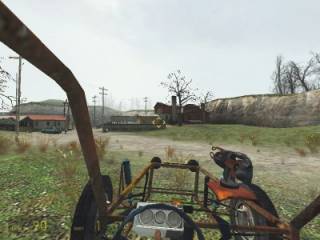
Vehicle controls are unfortunate
This might be forgiven because it’s an artifact of Half-Life 2’s era. Unfortunately, both acceleration and steering are mapped to the same analog stick on consoles -- that is, press up on the analog stick to accelerate and yaw left or right to steer. This causes problems for obvious reasons. Incline down on the stick to reverse. Unfortunately, when you reverse there’s some inverse/invert/opposite/false logic control going on where the boat twists around in random directions. I hear the PC vehicle control is also bad if not worse. Actually, I’m a little surprised that EA didn’t make a pass at altering the controls for the console version on The Orange Box.Weird geometry issues while on vehicles
This is very rare, but it connects with the unfortunate vehicle controls so I think it’s worth mentioning. There are instances where vehicles, especially the boat, will get caught on a lot of geometry. In the boat’s case, because it tends to pitch awkwardly through the water at high speeds, it can get caught on rising mounds of sand or the many logs strewn throughout the water. Again, it’s just a little bit unfortunate that the experience can be somewhat sullied by these small niggles.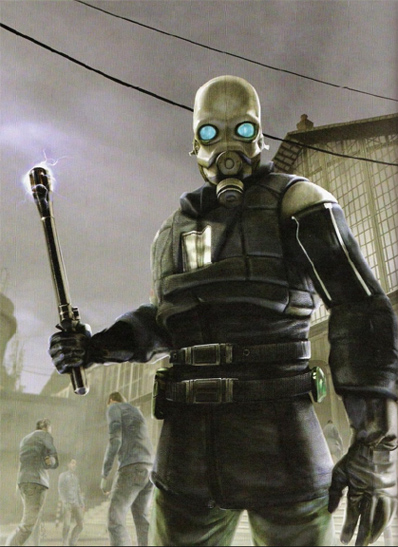
Both enemy AI and ally AI is legitimately bad
Something went terribly wrong when the AI was being programmed for all non-player character units in Half-Life 2 (save perhaps Alyx); certainly more so for hostiles than for allies. The way enemies behave just doesn’t make sense. Both the Combine and the Civil Defense cop forces are horrendously dense. They seem to take pleasure in standing out in the open, and, if that’s not enough, running straight up to the player and standing directly in front of the player without doing much in the way of fighting back. Other than their force -- the damage they deal -- all the hostiles are tame. There’s one particularly bad instance at the Lighthouse where four or five consecutive dropships drop Combine forces on the ground. Ordinarily the Combine would be something of a relatively meek threat. They are all but completely docile however, because they’re scripted to come straight out of the dropship in a straight line, single file, very slowly, and they don’t move, and they don’t try to dodge fire or roll around, so the best way of clearing this section (in all of sixty seconds) is to stand directly outside of each dropship every single time and act as a one-man firing squad, dismissing every single Combine soldier as they exit. It’s all made especially more disappointing because the enemy AI in the original Half-Life was so good for its time. The Marines/Black Ops units move around quickly, chase you, drop back, and take cover. They certainly don’t wander around a diamond like they’ve just hit a home run for a grand slam, as the Combine does. If anything, as raised in the Rebel FM Game Club analysis of Half-Life 2, the AI in Half-Life 2 is actually a step down from the AI in Half-Life, which is certainly surprising. Ally artificial intelligent is also blunt. Tell them to stay and they’ll follow, tell them to follow and they’ll stay. They rejoice in placing their heads in the jaws of death. Then again, it is all in the name of freedom, and all under the control of the Freeman.Story
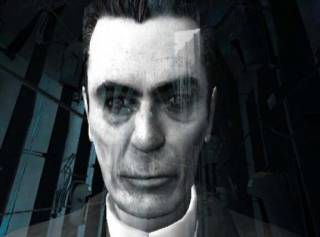
Great story atmosphere
Valve is one of the few developers that manages to extract some response from me for the medium of video games. In saying this I am specifically referring to story elements. On close analysis it must ultimately be leveled down to the fact that Valve’s characters are so well formed, so well developed, and so well represented by animation and voice acting, that the game can be incredibly immersive at times. I was often struck by pangs of pins and needles, caused by the appearances and the monologues of the G-Man. He is the most adored character, the most brilliantly eloquent, and the creepiest, most unnerving, and most unsettling character in the Half-Life realm; he is all these things concurrently. And as soon as the G-Man appeared -- “Rise and shine, Mr. Freeman” -- I was suddenly hit by this feeling. I can distinctly pin it down to a familiarity with the character and the content of the game but in spite of this it speaks strongly to me that Half-Life 2 was able to even elect a response from me. This feeling is mirrored by the game’s ending scene. And this atmosphere is not just limited to the G-Man. It extends throughout the entire game, and specifically to scenes taking place in the Citadel. The times when that immersion is broken are rare, but the fact that those moments do exist is more positively indicative of the significance and power of Half-Life 2’s atmosphere than it is negatively indicative of those few parts where the game briefly loses its form.The G-Man sightings are a fantastic idea
I find the G-Man sightings to be inherently interesting. It is entirely to do with the franchise’s back-story, the universe that Valve has developed for the Half-Life series. The sightings follow the character traits of the G-Man, in that the sightings are simultaneously attractive and frightening. I find I am inexplicably drawn to the G-Man while also wanting to flee away from him. And it’s not like he is a major part of the game; there are perhaps some ten or twelve instances where the G-Man appears for no more than several seconds at a time. It’s the pure mystery of the character that draws us toward him, and that’s why he’s such a celebrated figure and such an integral part of the world of Half-Life 2.
Time, Dr. Freeman
Half-Life 2 also carries with it one of the best, if not the best, endings across the pantheon of video games. In talking about the ending I am referring not only to the G-Man’s monologue, but also the final battle. Consider that the final boss battle isn’t a giant, monumental fight -- it’s just a real attempt to undermine Breen, and that’s important. But that’s not what sticks in the mind of most people. What most people think of, of course, is the G-Man. And I think this cutscene is so revered because it’s unexpected, and it is, in many respects, the perfect ending. It doesn’t get bogged down anywhere. It’s not a letdown. It’s this enigmatic force, and it’s this man appearing and meddling in our affairs once more. And, considering the Half-Life universe, it’s perfect. (I feel obligated to point out that my analysis of the ending naturally is colored by the fact that I know what happens in Half-Life 2: Episode One and Episode Two. How I would have reacted upon seeing that ending in 2004, I cannot fathom.)
Observations
The following are observations I made during the game. I’ve plotted them out in chronological order so they’re slightly easier to follow. I’ve also included the relevant chapter title.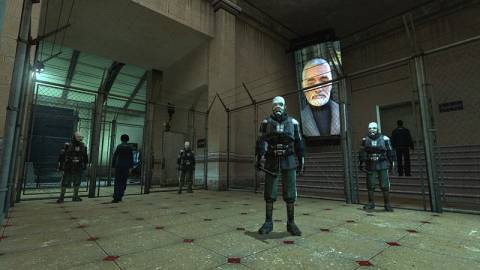
Walking through the train station is an impressive experience (Point Insertion)
Much has been made of Half-Life 2’s opening sequence. Even after five playthroughs and reams of after-market commentary about the scene, the train station is still outstanding. It feeds into the game’s atmosphere. There’s something about the scene: the way the guards are portrayed, the way Breen is omnipotent and oppressive even at this early stage and the fact that the train station is empty save for some citizens dressed in uniform jumpsuits. The station is depressing. The citizens reflect this with their own individual dialogue. And the player is forced to head through this brilliantly banal course, through hallways and doorways, rooms and foyers. It’s the pinnacle of interactive storytelling without actually saying much.Pick up that can (Point Insertion)
This is such an infamous part of Half-Life 2 and yet I still find it to be well done and amusing. There’s something special about the thirty second long sequence apart from its functional purpose of showing the player the nature of this demented world and society. But you’d best be picking up that can. (Or you can throw it at the Civil Defense cop. But you’d best not be throwing it at the Civil Defense cop.)
The plaza and the train station’s vomitorium (Point Insertion)
An epigrammatic note on the exit out of the train station into the plaza: it’s a very interesting moment. It’s a good instance of the ‘Where do I go?’ and ‘What do I do?’ moment (Half-Life 2 suffers from some bad instance of this later on, but here’s a good instance of this). Suddenly the player is presented with something that briefly eschews the famed linearity of the game. In reality the area is stolidly linear, and that’s what’s so well done about the plaza. The plaza is a tiny area but it feels so open. It’s all a big illusion, and it’s all excellent.Oppression (Point Insertion and parts of A Red Letter Day)
Think about this for a moment: one of the facets of Half-Life 2’s atmosphere is that feeling of oppression. This feeling is wholeheartedly instilled by the storytelling in the first chapter of the game -- the way that citizens are depressed, are sheltering, and are being attacked, beaten. If this chapter disappeared from the game all the player would know is that they were being chased by the Combine. The game starts sparse after the first chapter. That’s why the first chapter is both integral and brilliant, because it establishes that amazing feeling of oppression that lasts not for only a few hours, not for only half the game, but for the entire game.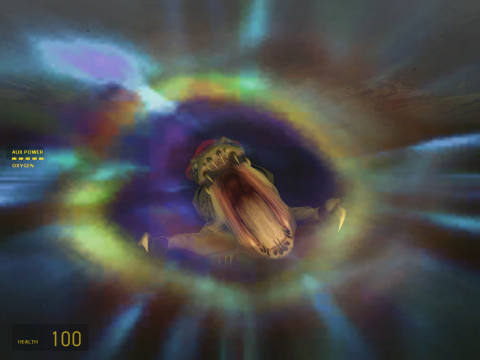
The portal (A Red Letter Day)
Entering Kleiner’s portal following Alyx is another instance of where I really felt the story and felt the atmosphere, even though I knew what was coming up -- Breen’s office, and the only instance of the Ichthyosaur in the game. Despite this it remains tense and entertaining.The crowbar (A Red Letter Day)
This tension is carried over as soon as you get the crowbar. My stomach sank as the music kicked in and I thought, ‘Here it is. Here we go again. This is it.’ And, again, it’s such a striking scene, especially for those who are very familiar with Half-Life 2. It’s the beginning of the journey, Gordon Freeman’s odyssey, once more.The helicopter gunship is ruthless (Route Kanal)
I’d be surprised to find someone who enjoys being tailed by the most menacing helicopter I’ve ever had the (dis)pleasure of facing off against. On foot, on boat, you’re never safe. It’s really well done, and that’s precisely why it’s so hated. Because it’s hard, and it’s mean, and you just want to be rid of it, and as soon as it explodes it imparts both relief and a great feeling of success.Water physics puzzles are great (Route Kanal)
I really enjoy the water physics puzzles. They stick out to me because no other video game seems to have done them quite as well as Valve yet. I love the novelty and intelligence of using buoyant objects to prop up other things, or using water to hold down other objects.Boat control (Water Hazard)
We addressed the vehicle control above, but I think it’s worth reiterating that the boat control, especially in tight areas, can be quite infuriating. It just doesn’t seem to work! Once more, though, had this game been made today as opposed to in 2004, I think this wouldn’t be a problem.Pipes (Water Hazard)
Hand-in-hand with the controls runs that stupid, terrible, ill-advised pipe ride/jump that you’re required to make half-way through the Water Hazard. Right after coming out of a dark, poorly lit tunnel, the designers expect you to jump on top of a pipe, then ride on top of several other pipes, with your momentum being enjambed by the fact that each chunk of pipe is at a lower level so you end up jutting down on every one like a set of stairs, and then, worst of all, they want you to balance the distance so you can fit perfectly into this small gap that they expect you to get through at the end, at high speed, and off kilter. Worst of all, music runs throughout the first attempt, so they clearly think it’s possible to make it first time, and then when you don’t make it the music cuts. The boat control is terrible, let alone expecting the player to balance the craft on thin, short, circular ground. This was a horrible, horrible idea, a section of the game that serves only to stoke the torment of the player.Jumps (Water Hazard)
And I’m not sure I quite understand the purpose of having the player negotiate all those jumps in the first place. Why not just have something else connect areas together (like a bridge)? It just adds unnecessary pressure and can slow down the game if one doesn’t hit the jump right. They’re just not needed, and they’re not convincing.We don’t go to Ravenholm except for when we go to Ravenholm (Black Mesa East)
The fact that the buildup to Ravenholm is so obvious (and the words coming out of the character’s mouths are all but ignored) is fairly laughable, but ultimately it doesn’t bother me. Alyx goes out of her way to point out that “We don’t go to Ravenholm anymore”. Following this, Eli plainly says not to go through Ravenholm, only for Alyx to ultimately conclude, “Okay Gordon! Looks like you’re going to have to go through Ravenholm!” And what obstacle blocks Freeman’s passage through the route that wouldn’t lead him through Ravenholm? Well, separating Alyx and Gordon is some insubstantial-looking rubble that could probably be displaced by the gravity gun. Even if it couldn’t, Freeman’s got Dog by his side! Dog can open heavy, giant airlock doors that weigh like nobody’s business, and yet it doesn’t occur to Freeman or to Alyx to ask Dog to flick a finger at the rubble to make it go away. Again, it’s laughable, but there are very few perfect stories in the world and, after all, there has to be something to make the player go through Ravenholm. Just remember: we don’t go to Ravenholm. Except for when we go to Ravenholm.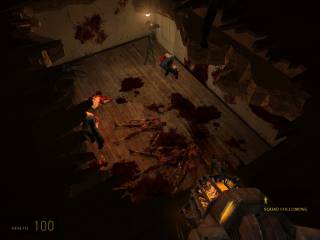
No bullets (“We Don’t Go to Ravenholm”)
The tutorial for the gravity gun is the entire Ravenholm chapter, because there are plenty of barrels, destructible things, saw blades, and other generally usable objects at Freeman’s disposal. There is an achievement on the XBOX 360 version of The Orange Box that requires players to clear Ravenholm without using firearms. It’s certainly an interesting experience and a great achievement if you manage, and more a testament to the gameplay design that it’s actually possible and that it remains interesting and engaging against to do so many enemies.The maracas of death (“We Don’t Go to Ravenholm”)
The maracas of death (the black, spider-like, poisonous headcrabs) are introduced in Ravenholm. They are terrifying. It’s the sound they make. As soon as I hear them, imaginary chills shoot down my spine. The only thing worse are those zombies that spawn headcrabs, because the sounds they make are even more terrifying and also highly disturbing. Again, great design.The bridge (Highway 17)
I love the way the bridge is designed and how there are many different approaches you can take. You can leap across the beams, or you can cover them slowly. You can take out the gunships quickly, or you can wait on them and take them out at a more opportune moment.
Lonely (Sandtraps)
It’s at this point in the game -- and I wrote this down on the letter paper I was using to take notes -- that I began to feel really lonely (in the game). It’s a feeling I can’t quite describe, and perhaps it’s not so much being lonely, but being down, and not feeling up to the task. Because it’s been so long since the game has provided allies or partners, and it just really sucks. The environments are depressing, and I just wanted to leave. I mean all these things in a positive sense: it’s not a criticism of the way the game’s designed; if anything it’s praise, because that world is depressing, and that world is sad, and it’s amazing that the game can convey those feelings through the screen when other games can only hope to.
We don’t step on the sand (Sandtraps)
If you step on the sand antlions will spawn, but I, as I suspect many others feel, couldn’t be bothered setting up bridges made of rubble, so I just sprinted across and kept running and dealt with the bugs as best I could. However, there’s something to be said about that moment where you run up over the hill to where the second set of “sandtraps” is, and the vista opens up, and you see that there are no rocks to run on, and they expect you to cross the sand using only a few planks of woods and the like, and the instinctive reaction is, “Holy crap.” Also, the sequences as soon as you gain control of the antlions are nicely set up. Entering Nova Prospekt using the antlions sees you have to clear a bunch of enemies, and all those areas where you have to think about how you’ll use the antlions are very well designed.Nova Prospekt, though linear, does not feel linear (Nova Prospekt)
Nova Prospekt feels massive, even though it’s entirely linear. How is this effect managed? Maybe it’s because you can see everywhere (and you can see ahead to where you’ll eventually end up). Again, though, it’s one of those things about the game’s design that confounds me, because I’m not sure how Valve is able to make such a corridor-filled area feel like this giant, expansive complex.Devoid (Nova Prospekt)
The prison also feels empty, which is even more confusing. There are very few enemies for the first five minutes or so, and despite this the tension is almost at breaking point and it’s helped along by the security monitors which show what’s coming up that are peppered throughout the player’s path. The turrets, which effectively replace the Combine, are put to very good use.Antlions obstruct the path in tight areas (Nova Prospekt)
This indicates how the team-members will behave in ‘Follow Freeman’ and ‘Anticitizen One’. The antlions just straight up get in the way in Nova Prospekt, and it’s terrible because the corridors are so tight. Thankfully, they don’t seem to turn against you if you kill them (which is what I resorted to doing so I could get through some parts).Breen’s monologue (Nova Prospekt)
I love Breen’s monologue to the security forces in Nova Prospekt. Everything he says is excellent; Breen seems to me an underrated character. After all, he is fully correct. How can a scientist, who didn’t even really achieve anything as a scientist and who doesn’t even have basic weapons training, pose such a threat to such a force that is the Combine?Health (Nova Prospekt)
Valve also made a very good design choice when they pulled the majority of the health packs from Nova Prospekt. The result is that for the most part the player is low on health, and the chapter grows very tense and desperate.Team members block corridors (Anticitizen One)
If I could kill them or opt out of using them, I would, because they really only constitute an obstruction. They’re good for sending them to their death to clear out rooms and activate invisible markers after which enemies spawn, and they’re okay at handling headcrabs, but in corridors they can be more deadly than the Combine because they can lock you in to corners from which you’ll be utterly vulnerable. In spite of this, I like the fact that this section of the game contrasts with the earlier, lonelier, more depressing segments.Leading to the citadel (Our Benefactors)
The entrance to the citadel is perfectly handled -- it’s isolated, cold, and lonely, and there’s machinery all around, and it’s oppressive, claustrophobic, and dangerous. It’s so well handled. In entering what will ultimately be the last area of the game one gets this terrible feeling that this, in fact, is it: this is the end.
And, ultimately, the normal game conventions are eschewed (Dark Energy)
Finally, I like the fact that once you reach the last few moments in the game everything that the player has become accustomed to is completely done away with. The Half-Life conventions disappear. Suddenly, control is taken away during cutscenes and pieces of exposition (all control apart from looking around). Even the zoom function disappears, but the lack of movement sticks out tremendously. Moreover, the normal weapons are taken away and you’re left with this curious, overpowered, but strangely unsatisfying gravity gun (I personally dislike the form it takes -- not in a bad way, I just don’t like it as a weapon, but I know many don’t feel the same way). It’s a complete mirror of the way the game begins, and I like the way Valve pulled it off.Addressing external criticisms of the game
On the charge that the game is too long
I’ve heard the complaint that the game is too long. I think this would be a valid complaint if the game actually had too much fat and not enough muscle. It’s a hard case to make, though, and I certainly don’t think that’s an accurate reflection of Half-Life 2. I think that overwhelming majority of the game is perfectly fine, and that it should be there, and that it’s all enjoyable. That is indeed the metric that has to be considered here: are you still having fun? Are you having fun throughout the entire game? For me, the answer would be an unequivocal yes. There might be parts of the game that are uncomfortable, and there might be parts of the game that are difficult and that are challenging, but if you equate that with being “unfun” then there’s a bigger issue that has to be addressed, and it’s got nothing to do with Half-Life 2.On the charge that the game is too repetitive
Similarly, the complaint that the game is too repetitive is also largely unfounded. What parts of the game? Sandtraps? The game requires that you build bridges a total of two times. It takes effort and time and it takes a lot of thinking, but it’s not repetition. What other parts of the game? The shooting? The fact that there are many enemies? In actuality, what repetition there is in Half-Life 2 is inherent to all video games of this genre, and it might have something to do with the fact that the game is longer than others. This charge does not survive short scrutiny.On the charge that the shooting is no longer good, or is now substandard, or is now uncomfortable
I can certainly sympathize with this idea because the shooting, as I mentioned above, doesn’t quite feel as collected as more modern first-person shooters. But I would offer the following as a response: how do you define good shooting? What is good shooting? In Half-Life 2, the enemies fall after receiving a very reasonable amount of fire. Furthermore, the bullets go where you’re aiming, and recoil is manageable and largely negligible. It’s a challenge for me to find flaws. I would define good shooting as being able to target and destroy the enemy without unjust or unnatural hindrances -- that the enemies aren’t bullet sponges, for instance, and that the guns do shoot straight and are fair. And this is all true of Half-Life 2. No, the shooting may not be perfect, but it’s good, and even if it was only average it would be all that is required.On the charge that iron sights or a zoom function for weapons is required
Of all the possible criticisms, this one is the closest to being fair, but despite this I think that it’s still not a viable flaw. When starting off I did feel like I wanted to zoom in, but this desire soon disappeared perhaps half an hour into the game. Not every game needs to follow the first-person shooter mold that was created circa 2006. Half-Life 2 certainly does not suffer from the fact that you can’t zoom in, because that function is just never necessary in the game. So what’s the problem? Well, there isn’t one. It’s like asking for double the number of weapons to be included in the game. They’re not needed, so there’s no point adding more on. There’s something to be said about simplicity, and simplicity done well, especially in this case.The journey
As a thought to finish off, I think it’s worth bringing up the length of Half-Life 2. It’s going to be approximately fifteen to sixteen hours for the first playthrough, and twelve on the second playthrough. That’s a significant length. Have we lost something here? It seems to me that games are no longer as long as they used to be. This may not be the trend for role-playing games or for other genres, but I think it’s a fair representation of the shooter and third-person adventure game market. Uncharted 2 is some eight or nine hours, and God of War is similar; Modern Warfare 2 is closer to six hours as is Killzone 2. Killzone 2 can be completed in a mere four hours if you blitz through.Perhaps it’s too hard to design long video games. Maybe it’s too much to handle. Maybe there are too many variables and too many factors; too many things to think about. Perhaps developers can no longer handle the heat of trying to think of different scenarios and different areas and different tasks and different goals to present the player with. Maybe it’s too hard to come up with a good story to back the game with.
Perhaps multiplayer has picked up the slack. Maybe that’s what’s at the forefront now: giving the online experience more focus, because that’s what players will end up sinking more time and money into. Modern Warfare 2 serves well as the best example of this -- such a short campaign, but so much time allotted by players into the online components. But that’s no excuse for games that are single player only. The most recent Silent Hill games, for instance, have been full priced and have not been the longest games of all time.
No one is saying that fat should be added to beef up the experience, because that would achieve the opposite effect. That’s certainly not my contention. Nor do I want to appear like I’m concerned, or that I’m ringing the death bells or something similar. That’s not what I think, because I too enjoy modern games a whole lot, even if they’re significantly shorter. I just find it a little sad that I no longer expect a game to last me some two weeks, for instance. If I hadn’t been playing Half-Life 2 for the purposes of writing something like this, I probably would have only played it for forty-five minutes at a time, and it would have lasted me for twelve days or more. That’s a significant amount of time for a single player experience. And it was a great experience. Is it something missed, something lost? Maybe. Perhaps for some. A little disappointing for me, nothing to make me despair, but something to make me think better of Half-Life 2 when I do pick it up to play through it, because I know it’s going to provide me with an experience that few other games will offer.
